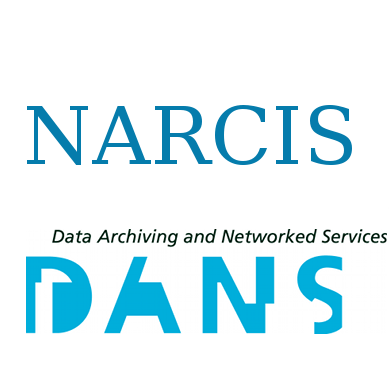Focal point
Location
National Academic Research and Collaborations Information System (NARCIS) is the main Dutch national portal for those looking for information about researchers and their work. NARCIS aggregates data from around 30 institutional repositories. Besides researchers, NARCIS is also used by students, journalists and people working in educational and government institutions as well as the business sector.
NARCIS provides access to scientific information, including (open access) publications from the repositories of all the Dutch universities, KNAW, NWO and a number of research institutes, datasets from some data archives as well as descriptions of research projects, researchers and research institutes.
This means that NARCIS cannot be used as an entry point to access complete overviews of publications of researchers (yet). However, there are more institutions that make all their scientific publications accessible via NARCIS. By doing so, it will become possible to create much more complete publication lists of researchers.
In 2004, the development of NARCIS started as a cooperation project of KNAW Research Information, NWO, VSNU and METIS, as part of the development of services within the DARE programme of SURFfoundation. This project resulted in the NARCIS portal, in which the DAREnet service was incorporated in January 2007. NARCIS has been part of DANS since 2011.
DANS - Data Archiving and Networked Services - is the Netherlands Institute for permanent access to digital research resources. DANS encourages researchers to make their digital research data and related outputs Findable, Accessible, Interoperable and Reusable.
Members:
Resources
Displaying 216 - 220 of 1863Groepsrisico op de kaart gezet. Toelichtend rapport
Het RIVM heeft in samenwerking met TNO twee methoden uitgewerkt om in een bepaald gebied de kans op een ongeval met een groot aantal slachtoffers (het groepsrisico) inzichtelijker te maken. Uitgangspunt is een zogeheten gebiedsgerichte benadering. Het groepsrisico wordt veroorzaakt door de aanwezige gevaarlijke stoffen in een gebied, zoals bij bedrijven en tijdens het transport ervan. De nieuwe benadering maakt het groepsrisico op een kaart inzichtelijk. In de oorspronkelijke, wetenschappelijke weergave in een grafiek ontbreekt dit overzicht.
Groepsrisico op de kaart gezet. Hoofdrapport
Het RIVM heeft in samenwerking met TNO twee methoden uitgewerkt om in een bepaald gebied de kans op een ongeval met een groot aantal slachtoffers (het groepsrisico) inzichtelijker te maken. Uitgangspunt is een zogeheten gebiedsgerichte benadering. Het groepsrisico wordt veroorzaakt door de aanwezige gevaarlijke stoffen in een gebied, zoals bij bedrijven en tijdens het transport ervan. De nieuwe benadering maakt het groepsrisico op een kaart inzichtelijk. In de oorspronkelijke, wetenschappelijke weergave in een grafiek ontbreekt dit overzicht.
Ecosysteemdiensten als ordenend principe voor duurzaam bodembeheer en gebiedsinrichting : Rekenen met de Triple-O aanpak in het Leiden Bio Science Park
Het RIVM heeft meegewerkt aan de ontwikkeling van een methode waarmee kan worden afgewogen welk bodembeheer en welke ruimtelijke inrichtingsplannen het meest bijdragen aan een 'duurzame' groene infrastructuur in een gebied. Deze zogeheten Triple-O aanpak biedt mogelijkheden om de voordelen die de mens heeft van een natuurlijk systeem (bodem, water en groen, oftewel ecosysteemdiensten) in te zetten bij bodembeheer en gebiedsontwikkeling. Triple-O staat voor Ontdekken, Overeenkomen en Ontwikkelen.
Movement patterns of a keystone waterbird species are highly predictable from landscape configuration
Background: Movement behaviour is fundamental to the ecology of animals and their interactions with other organisms, and as such contributes to ecosystem dynamics. Waterfowl are key players in ecological processes in wetlands and surrounding habitats through predator-prey interactions and their transportation of nutrients and other organisms. Understanding the drivers of their movement behaviour is crucial to predict how environmental changes affect their role in ecosystem functioning.
Land surface impacts on precipitation in the Netherlands
Dit proefschrift bestudeert de effecten van landgebruiksveranderingen uit het verleden en in de toekomst op neerslag in Nederland door middel van analyses van gemeten regendata en het gebruik van een weermodel.


